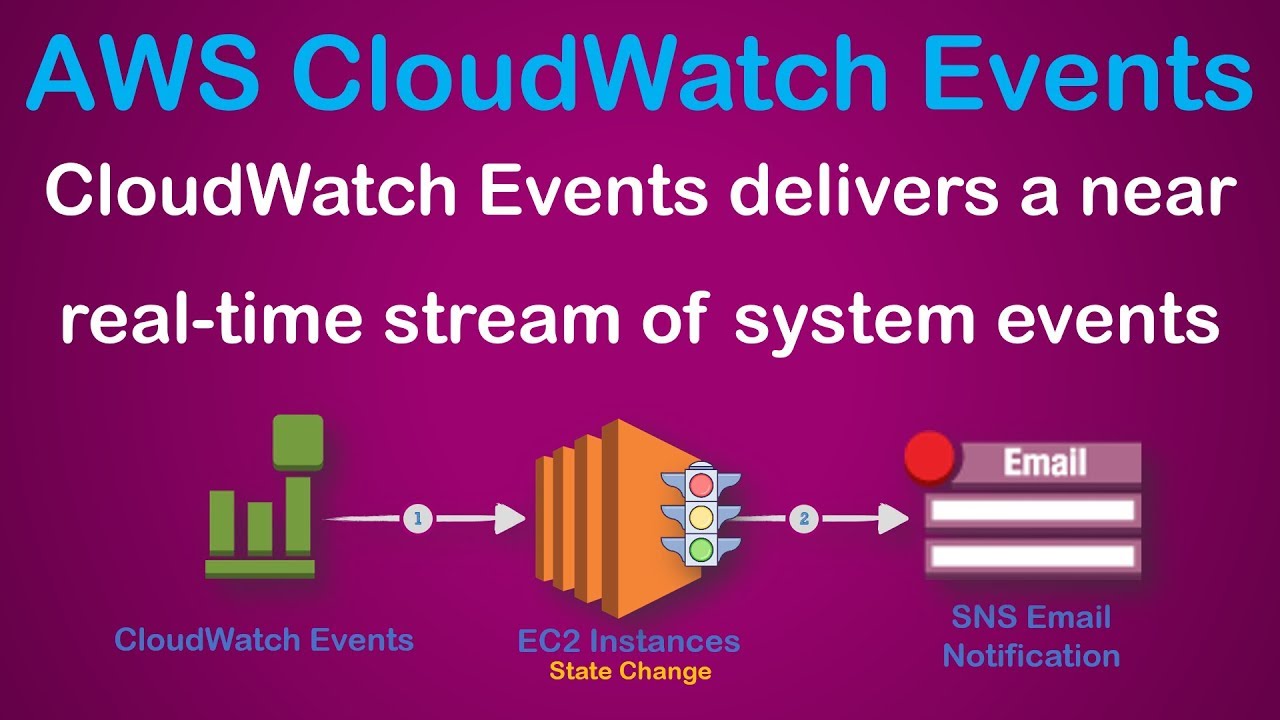Unlocking the Power of AWS CloudWatch Events: A Comprehensive Guide
 Sumit Mondal
Sumit Mondal
In the fast-paced world of cloud computing, efficiency is key. AWS CloudWatch Events, a versatile and powerful service provided by Amazon Web Services (AWS), stands as a beacon in the realm of managing and monitoring your cloud resources. In this blog post, we will embark on a journey to unravel the intricacies of AWS CloudWatch Events, exploring its features, use cases, and providing hands-on examples to empower you in optimizing your cloud infrastructure.
Understanding AWS CloudWatch Events
What is AWS CloudWatch Events? AWS CloudWatch Events is a fully-managed service that allows you to respond to system events and automate workflows. It acts as the central nervous system for your AWS environment, enabling you to react to changes, monitor and respond to system-wide events, and build scalable, event-driven solutions.
Key Features of AWS CloudWatch Events:
Event Sources: CloudWatch Events supports a wide array of event sources, including AWS services, integrated third-party applications, and custom sources. This flexibility allows you to capture events from various parts of your infrastructure.
Rules: Events are processed and matched against user-defined rules. These rules determine what events trigger actions and the actions to be taken when a rule is satisfied. This declarative approach provides granular control over your event-driven architecture.
Targets: Once an event matches a rule, CloudWatch Events sends the event to one or more targets. Targets can include AWS Lambda functions, SNS topics, SQS queues, and more. This ensures seamless integration with other AWS services, allowing for a comprehensive response to events.
Use Cases for AWS CloudWatch Events
1. Automated Scaling: Imagine you have an application that experiences varying levels of traffic throughout the day. With CloudWatch Events, you can set up rules to trigger an automatic scaling action based on predefined metrics, such as CPU usage or incoming requests. This ensures your application is always responsive, while also optimizing costs during periods of lower demand.
Example: Create a CloudWatch Events rule that scales up an Auto Scaling Group when the average CPU utilization exceeds 70% for a specified duration.
2. Security and Compliance: Security is paramount in the cloud. CloudWatch Events can be utilized to detect and respond to security events in real-time. For instance, you can create rules to monitor API calls and trigger alerts or automated responses when suspicious activity is detected.
Example: Set up a rule to notify your security team when there are multiple failed login attempts within a short time frame, potentially indicating a security threat.
3. Custom Workflow Automation: CloudWatch Events allows you to design custom workflows that respond to specific events in your environment. This can include orchestrating multi-step processes or integrating with third-party applications.
Example: Create a rule that triggers a Lambda function to initiate a custom workflow whenever a new object is uploaded to an S3 bucket, such as resizing images, updating a database, and sending notifications.
Getting Hands-On with AWS CloudWatch Events
Now, let's dive into a practical example to showcase the simplicity and power of AWS CloudWatch Events.
Scenario: You have a serverless application consisting of multiple Lambda functions, and you want to log every invocation for monitoring purposes.
Steps:
Create a CloudWatch Events Rule:
Go to the AWS Management Console and navigate to CloudWatch.
In the CloudWatch dashboard, select "Rules" from the left-hand menu.
Click on "Create rule."
Define the Event Source:
For the event source, choose "Event Source Type" as "Event Source," and select "Lambda Function" as the service name.
Choose the specific Lambda function for which you want to capture events.
Configure the Rule:
- Define the conditions for triggering the rule. For this example, you can use the predefined event pattern or create a custom pattern based on your requirements.
Set up the Target:
- Add a target for your rule. In this case, choose "Lambda function" as the target and select the function responsible for logging Lambda invocations.
Complete the Rule:
Provide a name and description for your rule.
Review your settings and click on "Create rule."
Now, every time the selected Lambda function is invoked, CloudWatch Events will capture the event and trigger the defined action, such as logging the event details.
Conclusion
In conclusion, AWS CloudWatch Events is a robust tool that empowers you to build responsive, event-driven architectures in the cloud. Whether you're aiming to automate scaling, enhance security, or create custom workflows, CloudWatch Events provides the flexibility and scalability needed to meet the demands of modern cloud computing.
By embracing AWS CloudWatch Events, you not only enhance the efficiency of your cloud infrastructure but also open the door to a world of possibilities for automation and optimization. As you continue to explore the capabilities of CloudWatch Events, remember that its true power lies in its ability to adapt to the unique requirements of your applications and workloads. So, go ahead, experiment, and unleash the full potential of AWS CloudWatch Events in your cloud journey.
Subscribe to my newsletter
Read articles from Sumit Mondal directly inside your inbox. Subscribe to the newsletter, and don't miss out.
Written by

Sumit Mondal
Sumit Mondal
Hello Hashnode Community! I'm Sumit Mondal, your friendly neighborhood DevOps Engineer on a mission to elevate the world of software development and operations! Join me on Hashnode, and let's code, deploy, and innovate our way to success! Together, we'll shape the future of DevOps one commit at a time. #DevOps #Automation #ContinuousDelivery #HashnodeHero